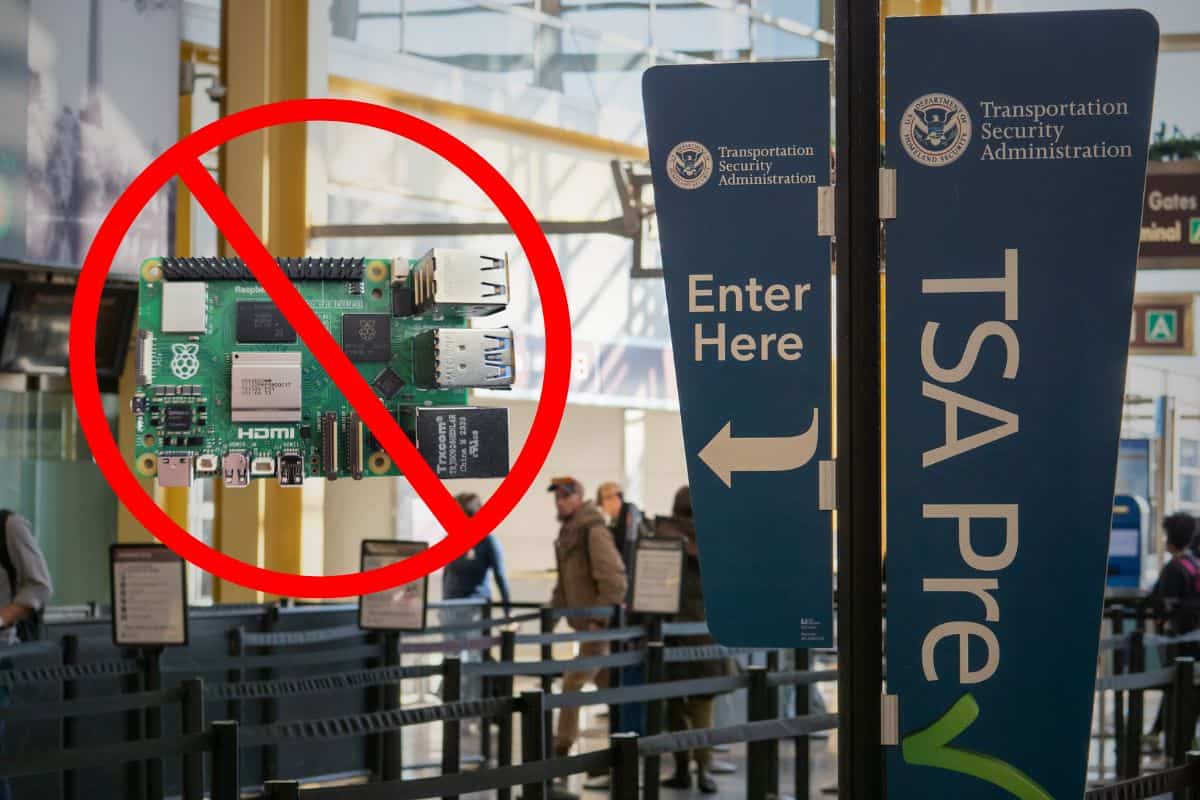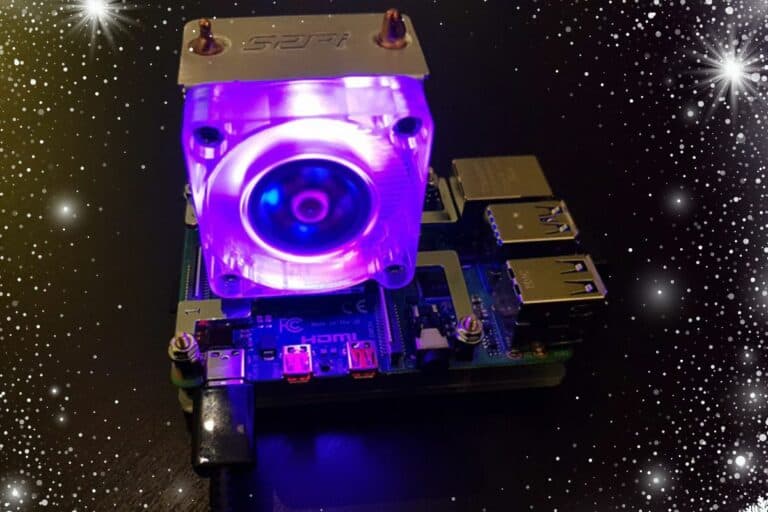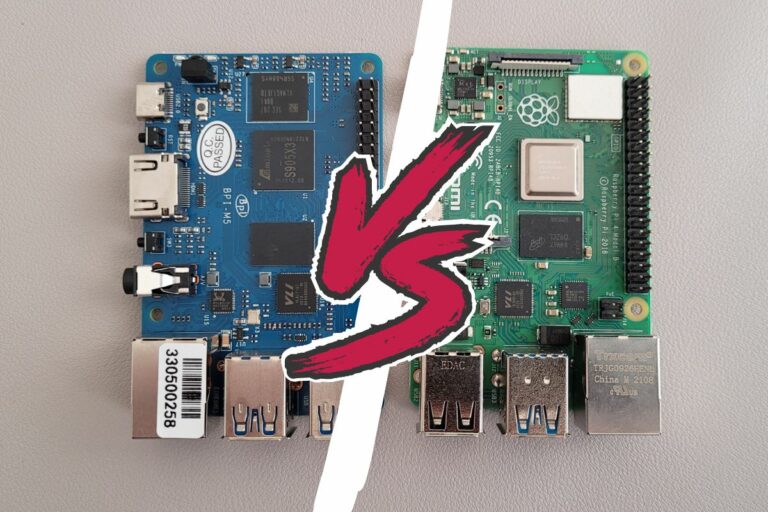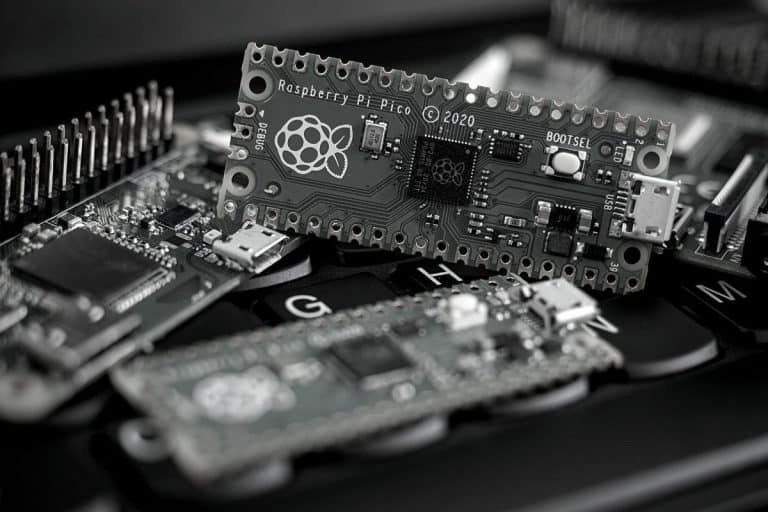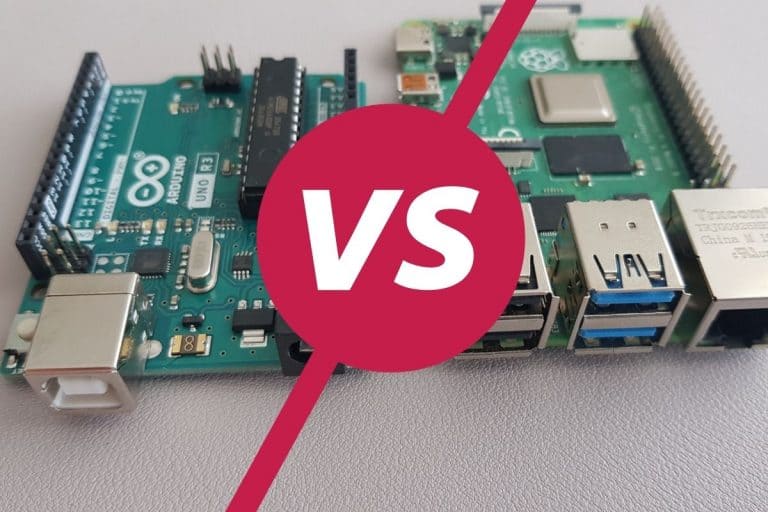Travelling With Raspberry Pi on a Plane: Allowed or not?
If you’re about to take your Raspberry Pi on a plane, you might be a little nervous about security checks. Don’t worry, I’ve taken my Raspberry Pi on several international flights without any problems. Here is what you need to know.
According to the Transportation Security Administration (TSA), you can take a Raspberry Pi on an airplane. The rules state that “disassembled computers or computer parts” are allowed in both check-in and carry-on baggage.
If you love your Raspberry Pi too much to leave it behind on your upcoming trip, read on as we dive into the technicalities of airport security, TSA, and how you can safely take your Raspberry Pi everywhere you go.
If you’re looking to quickly progress on Raspberry Pi, you can check out my e-book here. It’s a 30-day challenge where you learn one new thing every day until you become a Raspberry Pi expert. The first third of the book teaches you the basics, but the following chapters include projects you can try on your own.
Can you bring Raspberry Pi on a plane?
If you want to travel with a Raspberry Pi, you have two options:
- Checked luggage: the luggage you check while boarding that is not accessible to you in the cabin.
- Carry-on luggage: the bags and items that passengers are allowed to bring with them into the cabin of an airplane.
Let’s see the rules and my tips for each case.
If you are lost in all these new words and abbreviations, request my free Raspberry Pi glossary here (PDF format)!
Download now
Checked Luggage
Checked luggage is the recommended option for carrying Raspberry Pi with you. Rules for checking luggage are much more relaxed than those for carry-on luggage.
Carrying Raspberry Pi in your checked luggage relieves the issue of explaining to the TSA officer why you are carrying a time bomb gadget, akin to the makeshift bomb used in ‘Die Hard’.
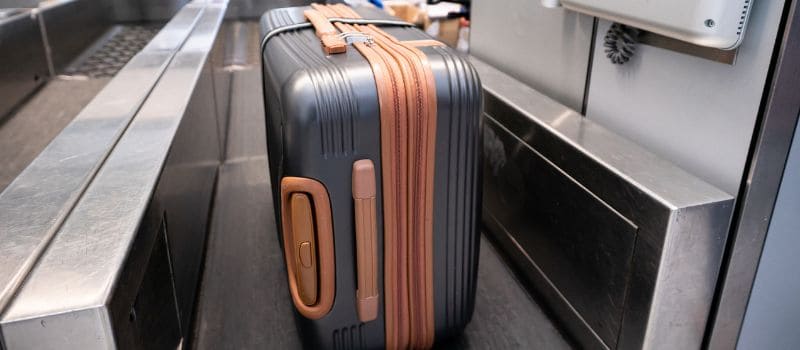
But to ensure its safe journey, the following points are recommended:
Join Our Community!
Connect, learn, and grow with other Raspberry Pi enthusiasts. Support RaspberryTips and enjoy an ad-free reading experience. Get exclusive monthly video tutorials and many other benefits.
Learn more- Pack properly: Checked luggage is notorious for harsh handling. Therefore, it is recommended that if you decide to carry the Raspberry Pi in your checked luggage, you should ensure proper packing/cushioning of the board.
- Use plastic container: Keep the Raspberry Pi and associated cabling and components in a container (e.g., plastic lunch box) and ensure everything inside is tightly secured (you can stuff the container with some cotton/ paper to keep everything snuggled in its place).
If you carry your Raspberry Pi in your checked luggage and have ensured it is adequately packed, there shouldn’t be any issue.
I have personally done so multiple times on international flights and have always received my beloved Raspberry Pi on the other end safely and without any hassle or unnecessary conflict/ discussion with the TSA officer.
Carry-on Luggage
If you’re already over the checked baggage limit or worried that the person handling your baggage might decide to crush it, consider putting your Raspberry Pi in your carry-on bag to your beloved close to you.
Similar to checked luggage, carrying your Raspberry Pi in your carry-on luggage is legal.
If you are lost in all these new words and abbreviations, request my free Raspberry Pi glossary here (PDF format)!
Download now
However, seeing a bare PCB with jumper wires and a couple of LEDs dangling from it might be scary for someone unfamiliar with Raspberry Pi. The TSA officer on duty might not consider your Raspberry Pi safe for flight in the cabin.
You can follow these tips to avoid an unnecessary discussion with a TSA officer who might seem adamant that you are trying to carry a time bomb with you:
- Dress up your Raspberry Pi before the trip: Numerous good-looking and functional covers are available for the Raspberry Pi. A covered Raspberry Pi is much less intimidating than a bare-bone one.
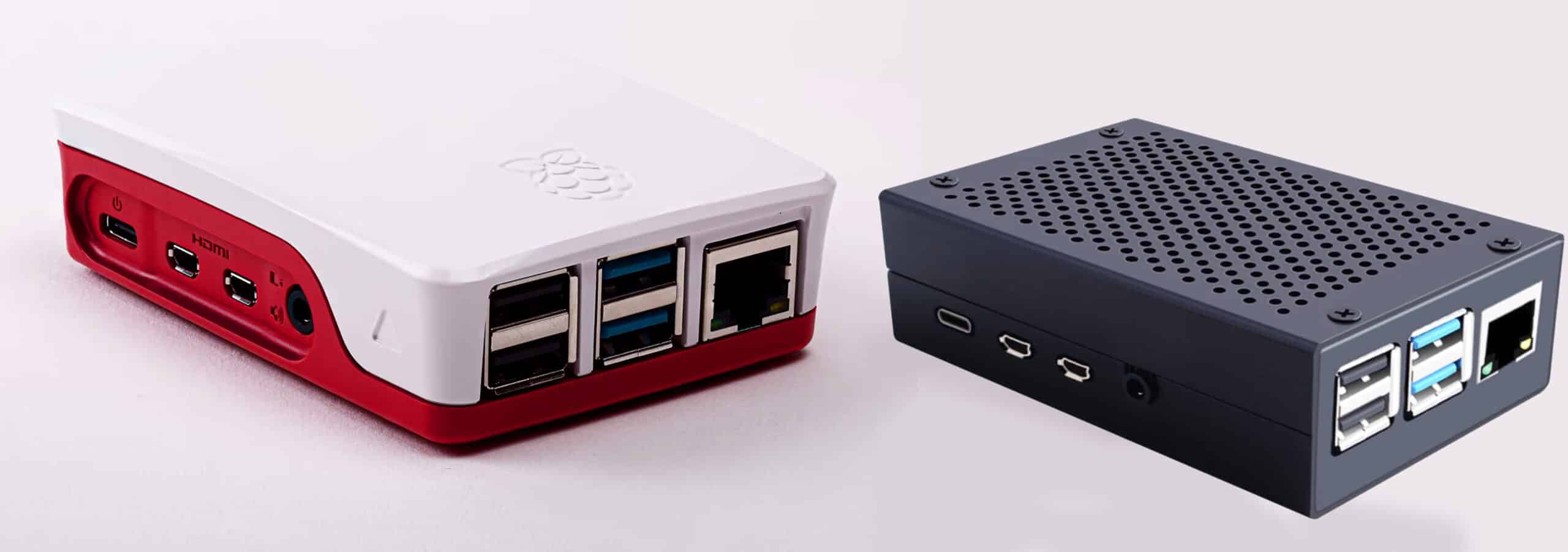
- Keep things neat: If you have accessories with your Raspberry Pi, keep them in a plastic or lunch box. If things are sorted in one container, they raise fewer eyebrows and are much easier to explain.
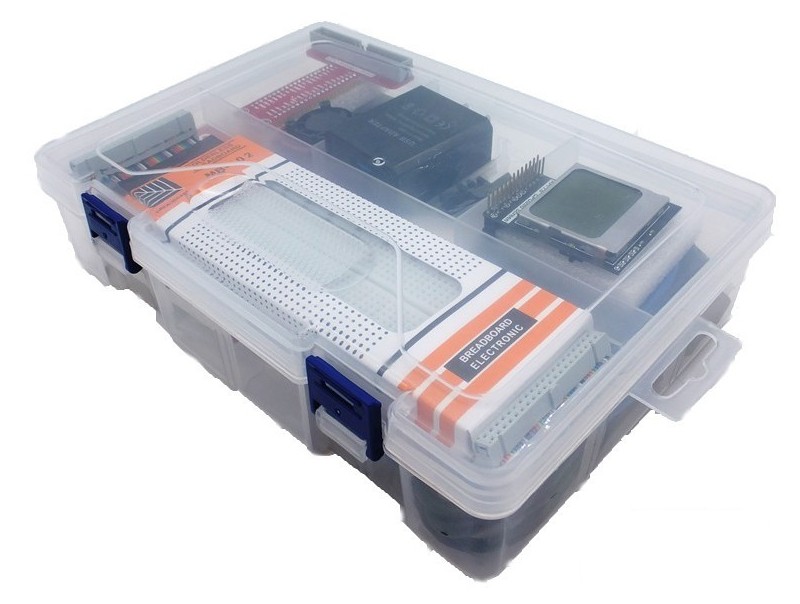
- Avoid fire hazards: Avoid accessories that might be a fire hazard e.g. Li-Ion or Li-Polymer-based battery packs.
I have successfully carried a homemade Li-ion power bank with a bare Raspberry Pi in my carry-on luggage (it was safely tucked away in an organized plastic bag). However, there are numerous occasions when people have been forced to leave their Raspberry Pi behind before boarding. It’s better to be safe than sorry.
Can you ‘Use’ Raspberry Pi on a Plane?
So, you have just made a fancy media consumption device using your Raspberry Pi and were planning to test it on your trip, or you want to program your Raspberry Pi during the flight.
No matter the reasoning, taking out a bare-bone single-board computer in the middle of the flight is bound to scare a passenger or two.
Besides worrying about scaring passengers, you must take care of the following things if you plan to use a Raspberry Pi on a plane.
- Power supply: How do you plan to power up your Raspberry Pi? A typical Raspberry Pi adaptor is designed to deliver 15W of power, the recommended power required to drive a Raspberry Pi. At the same time, typical USB sockets available on airlines can provide up to 60W. However, the exact value depends on other passengers’ usage as well.
- Wireless technology: Wireless devices are forbidden on an airline during take-off and landing. Similar policies apply to the Raspberry Pi and any other connected auxiliary you might use.
- Better to ask than be sorry: If you plan on working on your Raspberry Pi. I would advise you to ask the flight attendant if it would be okay. Getting timely permission might avoid possible embarrassment later.
I would advise you to avoid using your Raspberry Pi on a plane and leave the technical work until you reach your destination.
However, if you need to work on something unavoidable, then make sure you get permission from the flight attendant and the passengers around you to avoid anyone getting uncomfortable/ scared.
It's a free PDF guide containing every Raspberry Pi Linux command you should know!
Download now
What things are not allowed on a Plane?
Besides my own experience, if you are looking for an exhaustive list of items that are allowed and not allowed on an airplane, you should consult the TSA website.
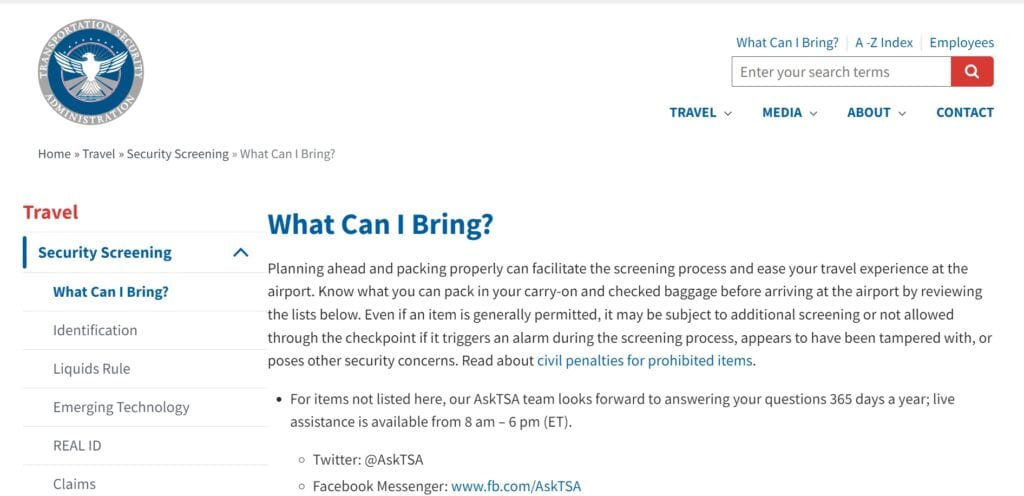
While Raspberry Pi itself is not listed in the items list, you can see that “Disassembled computer/computer parts/external hard drives” are allowed in both checked and carry-on luggage. Raspberry Pi would fall under this category and is therefore legally allowed in your luggage.

However, the TSA Website clearly states that “The final decision rests with the TSA officer on whether an item is allowed through the checkpoint.” Therefore, if the TSA officer decides that your Raspberry Pi is capable of blowing up the plane, he can demand that you leave it behind.
It's a free PDF guide containing every Raspberry Pi Linux command you should know!
Download now
Want to chat with other Raspberry Pi enthusiasts? Join the community, share your current projects and ask for help directly in the forums.
Summary: Some Pointers while bringing Raspberry Pi on a Plane
Here is a summary of all the pointers we have discussed thus far for bringing Raspberry Pi on a plane:
- Checked luggage is preferred over carry-on luggage for flying with a Raspberry Pi.
- If you have a case for your Raspberry Pi, it’s always preferable to dress it up.
- Please keep all your accessories and cables sorted in an organized box.
- If you have any specific accessory with your Raspberry Pi regarding the legality of which you are unsure. You should contact the airlines and get it sorted out well in time.
- Ask the airline crew well before boarding if you can carry your Raspberry Pi with you. It is much better to be told ‘No’ well in time rather than having to leave your Raspberry Pi at the airport.
Whenever you’re ready, here are other ways I can help you:
The RaspberryTips Community: If you want to hang out with me and other Raspberry Pi fans, you can join the community. I share exclusive tutorials and behind-the-scenes content there. Premium members can also visit the website without ads.
Master your Raspberry Pi in 30 days: If you are looking for the best tips to become an expert on Raspberry Pi, this book is for you. Learn useful Linux skills and practice multiple projects with step-by-step guides.
The Raspberry Pi Bootcamp: Understand everything about the Raspberry Pi, stop searching for help all the time, and finally enjoy completing your projects.
Master Python on Raspberry Pi: Create, understand, and improve any Python script for your Raspberry Pi. Learn the essentials step-by-step without losing time understanding useless concepts.
You can also find all my recommendations for tools and hardware on this page.

